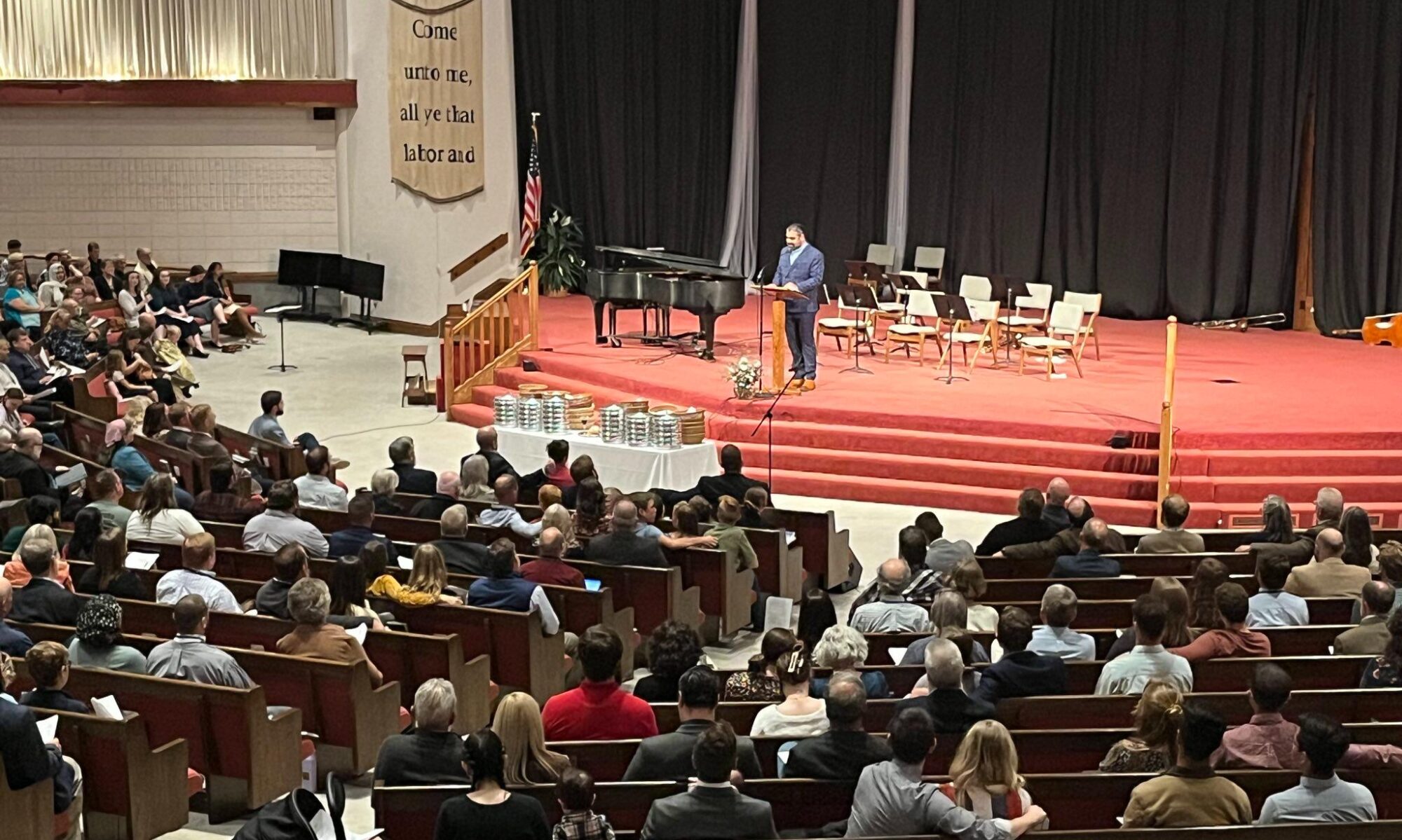Yahweh is the merciful One (Exodus 34). Jesus is Yahweh in the flesh. He embodies mercy.
Jesus as Center
Pastor Al Stout observed that in Matthew 4:12-17 Jesus does not begin his preaching ministry by going to the center of the Pharisees’ world–Jerusalem–because He himself has become the center of the world. No longer should the nations flock to Jerusalem, but they must now come to Jesus who has become the new Jerusalem.
The Story of the Bible in One Sentence
Doug Wilson writes:
Scripture tells us the story of how a Garden is transformed into a Garden City, but only after a dragon had turned that Garden into a howling wilderness, a haunt of owls and jackals, which lasted until an appointed warrior came to slay the dragon, giving up his life in the process, but with his blood effecting the transformation of the wilderness into the Garden City.
See how others summarized the Scriptures.
Double Death…
Chiastically, Jim Jordan argues in his recently released paper– on the structures of the gospel of Matthew–that the “martyrdom of the little children is prophetically related to the coming of the destruction of Jerusalem.” The martyrdom of the little children is avenged by the destruction of the guilty in AD 70.
Jesus, the New Samson
 David Garland believes Matthew is making a word play on the word “nazarite.” By doing so, he is comparing Jesus to Samson. Like Samson, Jesus “was made holy to God from his mother’s womb (Judges 16:17) and was to save Israel from its enemies (Judges 13:5). Like Samson, Jesus is a specially consecrated person who will save his people. Like Samson, Jesus will save his people through his own death” (Reading Matthew, 31).
David Garland believes Matthew is making a word play on the word “nazarite.” By doing so, he is comparing Jesus to Samson. Like Samson, Jesus “was made holy to God from his mother’s womb (Judges 16:17) and was to save Israel from its enemies (Judges 13:5). Like Samson, Jesus is a specially consecrated person who will save his people. Like Samson, Jesus will save his people through his own death” (Reading Matthew, 31).
Innocence and Guilt…a connection
While Mary was with Elizabeth for three months, John leaped in Elizabeth’s womb (Luke 1:41). It was during this time where Mary supposedly betrayed Joseph while betrothed. As Matthew one unfolds, the angel confirms Mary’s innocence to Joseph. While Mary was innocent, the same John who leaped in the presence of his God would grow up to challenge the religious leader of the day of betraying his own brother by taking his wife (Matthew 14:3). One was innocent, the other guilty.
Ruth as Gospel
Ruth is the perfect proof for typology. It shows that typology is necessary to biblical interpretation. Observing the text of Ruth only from a grammatical perspective misses all sorts of treasures. The positive aspect of typology is that it is not hidden, but it is all over the place. The Spirit does not waster his breath. Ruth is a fine example of this. Ruth is Israel in sin and Israel restored. Naomi is Israel unrepentant and Ruth is Israel clinging to God. The difficulty–and I should add the common distaste of biblical typology–in this form of hermeneutic is that it demands biblical knowledge. It demands knowing biblical history and it demands broadening your view of redemptive history. Redemption is the maturation of history. In Christ, the pieces, facts, details of the Bible come together. No longer will you be able to look at Genesis 1 without realizing its vast implications to the rest of sacred revelation.
Ruth does just that. It exposes us to laws in the Mosaic literature (Levirate Laws), to marriage themes (such as the union/clinging of Adam and Eve in Genesis 2), and to how eschatology functions (Israel exiled, Israel restored). Ruth is gospel, but it is just one of many pictures given to us in miniature form through Scriptures.
Head and Body
Mike Bull notes in his excellent book, Bible Matrix that a crucial element to grasp in systematic typology is that of the “head and body” (63). Adam, he writes, “goes through the pattern as the head of the human race. Then the race itself goes through the pattern. Adam builds the house and Eve fills it. Adam is structure; Eve is glory (63).”
Patterns
Mike Bull notes in a footnote (Bible Matrix; pg. 49) that the three central patterns of Scriptures: Creation, Feasts and Dominion correspond to Word, Sacrament and Government. The pattern of Scriptures, which points us to Christ, also points us to His bride.
Birthing a New World…
The illustration used by Jesus in John 16:21 carries a far greater weight than a simple analogy to the disciple’s loss, which will take place in a “little while.” The birthing of this “anthropos/man” is the birthing of the New World. The resurrection is the new birth.
This woman is birthing a new humanity in Jesus Christ from the darkness of the womb to the light of the world; from the darkness of the tomb to the light of the world. The great reversal occurs. Those who wept will now sing and those who mourned will now dance. The resurrection brings joy to each disciple, but it also will bring joy to the world.
